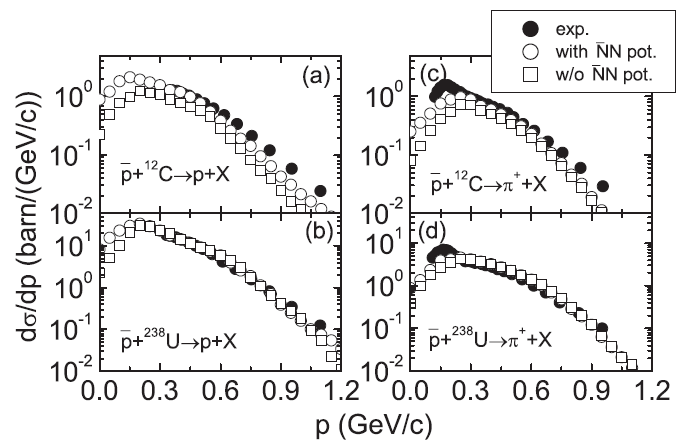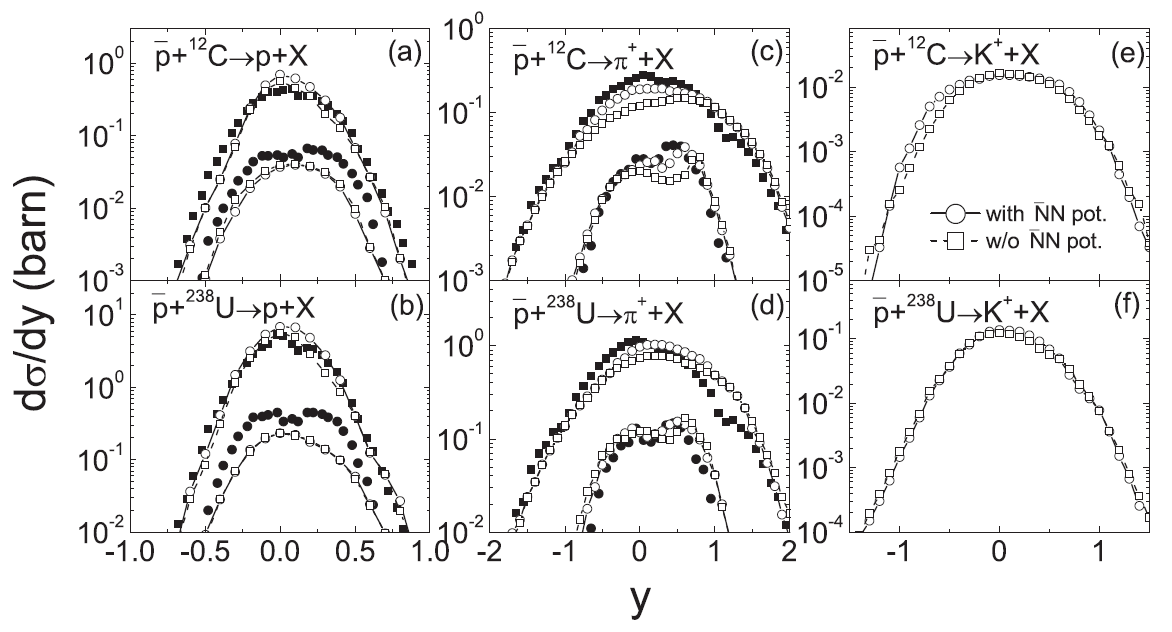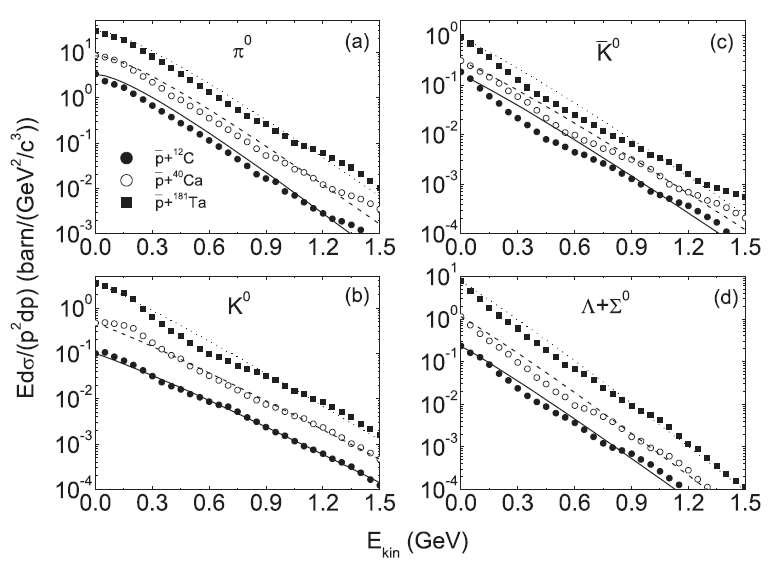The nuclear dynamics induced by antiproton has been investigated within the Lanzhou Quantum Molecular Dynamics (LQMD) model through the cooperation of theory physics group at Institute of Modern Physics, Chinese Academy of Sciences (IMP) with Institute for Theoretical Physics of Giessen University.
The first evidence for antiprotons was found at Berkeley in 1955. After this discovery, secondary beams of antiprotons were produced at CERN, BNL, KEK etc. The hadron structure and properties, cold quark-gluon plasma (QGP), antiprotonic atoms etc have been topical issues in collisions of antiproton with nucleon or heavy-ion collisions. The high intense beams and broad momentum scan for antiprotons can be provided by the being constructed facility FAIR in Germany. It is possible to produce the hypernuclei, in particular for s=-2, strange particles and charmonium dynamics with antiproton induced reactions.
The reaction channels of elastic scattering, annihilation, charge exchange and inelastic collisions have been included in the LQMD model. The rapidity and momentum distributions of p+ and protons from the LEAR measurements could be well reproduced. The impacts of system size and incident momentum on particle emissions were investigated in terms of the inclusive spectra, transverse momentum and rapidity distributions. It was found that the annihilations of antiprotons on nucleons are of importance on the particle production. Hyperons were mainly produced via meson induced reactions on nucleons and strangeness exchange collisions when the incident momentum was below the threshold value of annihilation reaction. A higher nuclear temperature was obtained from the kaon emission, but it has a lower value for hyperon production. The conclusions are also useful for the future PANDA experiments.
The results have been published in Physical Review C 89, 044617 (2014). It was supported by the Major State Basic Research Development Program in China (No. 2014CB845405), the National Natural Science Foundation of China Projects (Nos 11175218 and U1332207) and the Youth Innovation Promotion Association of Chinese Academy of Sciences.

Fig. 1 Momentum distributions of the angle-integrated cross sections for protons and p+ produced from antiproton reactions on 12C and 238U at 608 MeV/c.(Image by IMP)

Fig. 2 Rapidity distributions of protons, p+ and K+ in collisions of antiproton on 12C and 238U at 608 MeV/c.(Image by IMP)

Fig. 3 The inclusive spectra of neutral particles produced in the reaction of antiproton on 12C, 40Ca and 181Ta at 4 GeV/c. (Image by IMP)

